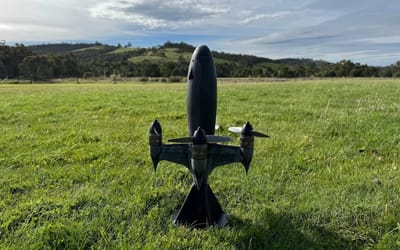Max Verstappen and Chris Harris take the Ford Mustang GTD for a test drive
Published on Jul 31, 2025 at 5:31 AM (UTC+4)
by Callum Tokody
Last updated on Jul 31, 2025 at 1:44 PM (UTC+4)
Edited by
Kate Bain
Max Verstappen has climbed into the Ford Mustang GTD with Chris Harris riding alongside, ready to find out if this American-built track car can really challenge a serious GT3 rival.
The Mustang GTD was developed with input from Multimatic and produces around 800 horsepower.
Its goal is to perform on track without giving up road-legal status.
But when Max Verstappen starts reading a car like this, lap by lap, it becomes clear how far it can really go.
VISIT SBX CARS – View live supercar auctions powered by Supercar Blondie
Max Verstappen breaks down the GTD
The session opened with a short drive in a Ford RS200, a car that set a historical contrast before the Mustang GTD took over.
Built to bridge the road-race divide, the Ford Mustang GTD is Ford’s most track-focused production car in years.
It carries the looks of a muscle car but aims for the lap times of a GT3 rival.
Max Verstappen got to work immediately. He commented on the way the GTD settled under braking, turned into corners, and held traction through quick changes in direction.

Chris Harris noted how composed the car felt even on uneven tarmac, saying the ride was more controlled than expected.
Verstappen explained that he tries to get up to speed within five laps in any new car.
He prepared by reviewing onboard footage and visualising the circuit layout.
In the GTD, he adjusted his approach corner by corner, looking for where the suspension could give more and where the limits began to show.

The Ford Mustang GTD responded predictably, which allowed Verstappen to refine his line and pacing without second-guessing the chassis.
Ford says the GTD can rival GT3 machinery, and the evidence from this session pointed in that direction.
The Mustang GTD ran a 6:52 at the Nürburgring, and Verstappen believed that number could improve.
He tested brake performance, turn-in stability, and grip through fast sections.
The Mustang GTD was not unpredictable, even as the pace increased. For a car this size, the behaviour was stable and direct.
GTD tested like a GT3 rival
Between sessions, Chris Harris and Max Verstappen talked through the car’s performance and its context.
Ford’s motorsport history came up, from the Cosworth DFV engine in Formula One to the brand’s renewed efforts in endurance racing.
The Ford Mustang GTD fits into that picture as more than a special edition. It is meant to be driven hard and judged on results.
Chris Harris pointed out the Mustang GTD’s braking consistency and body control during quick directional changes.
He compared the behaviour to what he has experienced in real GT3 rival setups.

Max Verstappen focused on the small things that contribute to lap time, including visibility, seating position, and confidence over kerbs.
These are details that do not appear in specs but matter to drivers trying to extract every tenth.
Although Verstappen has not placed an order for the Ford Mustang GTD, his input offered a clear view of how the car performed under real scrutiny.
His feedback was based on what the car did, not how it was marketed.
The test session was not about spectacle.
It was about how close the Ford Mustang GTD came to being a genuine GT3 rival, and how a driver like Max Verstappen breaks down a new platform to find out.
DISCOVER SBX CARS: The global premium car auction platform powered by Supercar Blondie
Callum Tokody is a content writer at Supercar Blondie, where he covers the latest in the automotive world with a focus on design and performance. With a background in automotive journalism, he has contributed to a range of publications in Australia and the UK. In addition to his writing, Callum also heads up PR and communications, helping to build and strengthen partnerships within the industry. Outside of work, he’s a design enthusiast with a soft spot for anything with a V8 and a good story.




